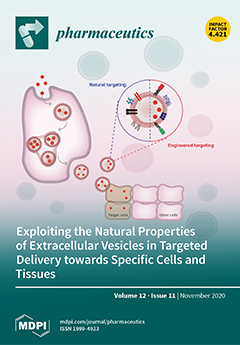The compound 1α,25-Dihydroxyvitamin D
3 (1,25(OH)
2D
3) is the active form of vitamin D
3 and a representative ligand of the vitamin D receptor (VDR). Previous studies have described the impacts of 1,25(OH)
2D
3 on a small number of cytochrome P450 (CYP) and uridine diphosphate-glucuronyltransferase (UGT) enzymes, but comparatively little is known about interactions between several important CYP and UGT isoforms and 1,25(OH)
2D
3 in vitro and/or in vivo. Thus, we investigated the effects of 1,25(OH)
2D
3 on the gene and protein expressions and functional activities of selected CYPs and UGTs and their impacts on drug pharmacokinetics in rats. The mRNA/protein expressions of Cyp2b1 and Cyp2c11 were downregulated in rat liver by 1,25(OH)
2D
3. Consistently, the in vitro metabolic kinetics (V
max and CL
int) of BUP (bupropion; a Cyp2b1 substrate) and TOL (tolbutamide; a Cyp2c11 substrate) were significantly changed by 1,25(OH)
2D
3 treatment in liver microsomes, but the kinetics of acetaminophen (an Ugt1a6/1a7/1a8 substrate) remained unaffected, consistent with Western blotting data for Ugt1a6. In rat pharmacokinetic studies, the total body clearance (CL) and nonrenal clearance (CL
NR) of BUP were significantly reduced by 1,25(OH)
2D
3, but unexpectedly, the total area under the plasma concentration versus time curve from time zero to infinity (AUC) of hydroxybupropion (HBUP) was increased probably due to a marked reduction in the renal clearance (CL
R) of HBUP. Additionally, the AUC, CL, and CL
NR for TOL and the AUC for 4-hydroxytolbutamide (HTOL) were unaffected by 1,25(OH)
2D
3 in vivo. Discrepancies between observed in vitro metabolic activity and in vivo pharmacokinetics of TOL were possibly due to a greater apparent distribution volume at the steady-state (V
ss) and lower plasma protein binding in 1,25(OH)
2D
3-treated rats. Our results suggest possible drug-drug and drug-nutrient interactions and provide additional information concerning safe drug combinations and dosing regimens for patients taking VDR ligand drugs including 1,25(OH)
2D
3.
Full article






